Deep Learning Based Feature Selection Algorithm for Small Targets Based on mRMR
Abstract
:1. Introduction
2. Related Knowledge
2.1. Minimum Redundancy Maximum Relevance Algorithm
2.2. Computer-Aided Diagnosis Using mRMR
2.3. Feature Selection Algorithm Proposed in This Paper
3. The Proposed Method
3.1. Data Pre-Processing
3.2. YOLOv5 Deep Learning Model
3.3. Proposed Method
4. Experiments and Simulations
5. Conclusions
Author Contributions
Funding
Data Availability Statement
Conflicts of Interest
References
- Bao, F.; Yin, K. Review and Progress of Feature Selection Algorithms. Sci. Technol. Wind. 2020, 6, 231. [Google Scholar]
- Li, S.; Wang, C. A New Maximum Correlation Minimum Redundancy Feature Selection Algorithm. J. Intell. Syst. 2021, 16, 649–661. [Google Scholar]
- Ji, Z.; Hu, M.; Yin, J. A Review of Feature Selection Algorithms. Electron. Des. Eng. 2011, 19, 46–51. [Google Scholar]
- Fu, S.; Liu, W.; Zhang, K.; Zhou, Y.; Tao, D. Semi-supervised classification by graph p-Laplacian convolutional networks. Inf. Sci. 2021, 560, 92–106. [Google Scholar] [CrossRef]
- Gong, E. Research on Semi-Supervised Algorithms Based on Integrated Deep Learning; Hangzhou Dianzi University: Hangzhou, China, 2021; p. 65. [Google Scholar]
- Song, Z.; Yang, X.; Xu, Z.; King, I. Graph-Based Semi-Supervised Learning: A Comprehensive Review. IEEE Trans. Neural Netw. Learn. Syst. 2022, 1–21. [Google Scholar] [CrossRef] [PubMed]
- Fan, W. Research on Medical Image Classification System Based on Semi-Supervised Algorithm; Beijing University of Posts and Telecommunications: Beijing, China, 2017; p. 63. [Google Scholar]
- Cai, X. Research on Graph-Based Semi-Supervised Algorithms and Their Applications; South China University of Technology: Guangzhou, China, 2013; p. 127. [Google Scholar]
- Wu, X.; Chen, H.; Li, T.; Wan, J. Semi-supervised feature selection with minimal redundancy based on local adaptive. Appl. Intell. 2021, 51, 8542–8563. [Google Scholar] [CrossRef]
- Jović, A.; Brkić, K.; Bogunović, N. A review of feature selection methods with applications. In Proceedings of the 2015 38th International Convention on Information and Communication Technology, Electronics and Microelectronics (MIPRO), Opatija, Croatia, 25–29 May 2015. [Google Scholar]
- Toğaçar, M.; Ergen, B.; Cömert, Z.; Özyurt, F. A Deep Feature Learning Model for Pneumonia Detection Applying a Combination of mRMR Feature Selection and Machine Learning Models. Irbm 2020, 41, 212–222. [Google Scholar] [CrossRef]
- Li, B.Q.; Hu, L.-L.; Chen, L.; Feng, K.-Y.; Cai, Y.-D.; Chou, K.-C. Prediction of protein domain with mRMR feature selection and analysis. PLoS ONE 2012, 7, e39308. [Google Scholar] [CrossRef] [PubMed] [Green Version]
- Wu, Z. Research on Small Defect Detection Technology and Application Based on Convolutional Neural Network; University of Electronic Science and Technology of China: Chengdu, China, 2021; p. 83. [Google Scholar]
- Liu, C. Research on Surface Defect Detection Technology of Small Parts Based on Convolutional Neural Network; Harbin University of Science and Technology: Harbin, China, 2019; p. 74. [Google Scholar]
- Lin, Y.; Hu, Q.; Liu, J.; Duan, J. Multi-label feature selection based on max-dependency and min-redundancy. Neurocomputing 2015, 168, 92–103. [Google Scholar] [CrossRef]
- Zhang, L.; Wang, C. Multi-label feature selection algorithm based on maximum correlation and minimum redundancy joint mutual information. J. Commun. 2018, 39, 111–122. [Google Scholar]
- Sakar, C.O.; Kursun, O.; Gurgen, F. A feature selection method based on kernel canonical correlation analysis and the minimum Redundancy–Maximum Relevance filter method. Expert Syst. Appl. 2012, 39, 3432–3437. [Google Scholar] [CrossRef]
- Yang, Z.; Wilson, A.; Smola, A.; Song, L. A la Carte—Learning Fast Kernels. In Artificial Intelligence and Statistics; PMLR: New York, NY, USA, 2014; pp. 1098–1106. [Google Scholar]
- Li, N.; Yang, J.; Fang, S. Semantic Characteristic Prediction of Pulmonary Nodules Using the Causal Discovery Based on Streaming Features Algorithm. In Proceedings of the 2018 IEEE International Conference on Bioinformatics and Biomedicine (BIBM), Madrid, Spain, 3–6 December 2018; pp. 1009–1012. [Google Scholar]
- Li, N.; Fang, S.; Yu, K.; Chen, Y. Semantic Features Prediction for Pulmonary Nodule Diagnosis based on Online Streaming Feature Selection. IEEE Access 2019, 7, 61121–61135. [Google Scholar] [CrossRef]
- Yang, J.; Guo, X.; An, N.; Wang, A.; Yu, K. Streaming feature-based causal structure learning algorithm with symmetrical uncertainty. Inf. Sci. 2018, 467, 708–724. [Google Scholar] [CrossRef]
- Peng, H.; Long, F.; Ding, C. Feature Selection Based On Mutual Information: Criteria of Max-Dependency, Max-Relevance, and Min-Redundancy. IEEE Trans. Pattern Anal. Mach. Intell. 2005, 27, 1226–1238. [Google Scholar] [CrossRef] [PubMed]
- Smith, E.; Stein, P.; Furst, J.; Raicu, D.S. Weak Segmentations and Ensemble Learning to Predict Semantic Ratings of Lung Nodules. In Proceedings of the 2013 12th International Conference on Machine Learning and Applications, Miami, FL, USA, 4–7 December 2013. [Google Scholar]
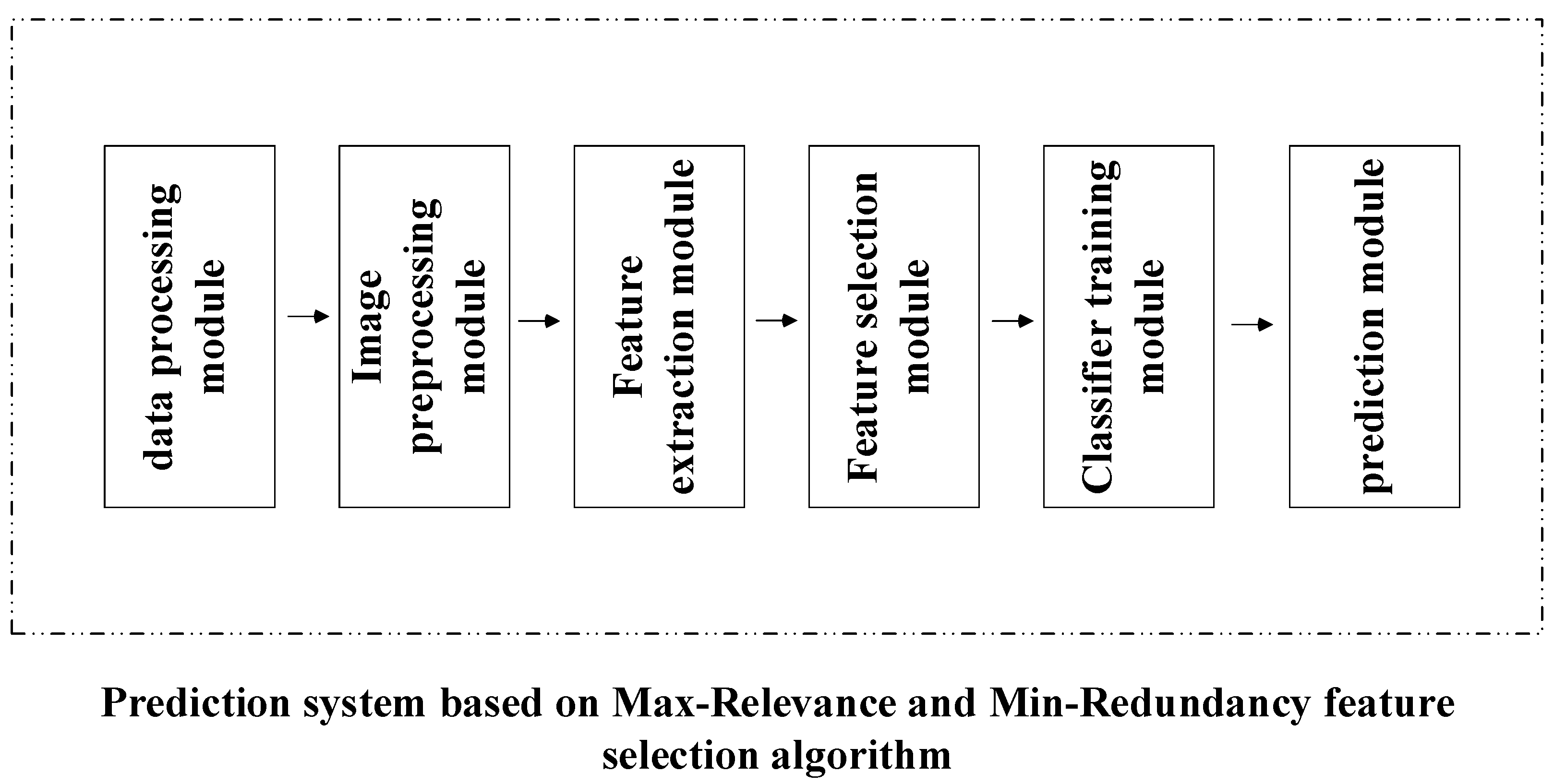
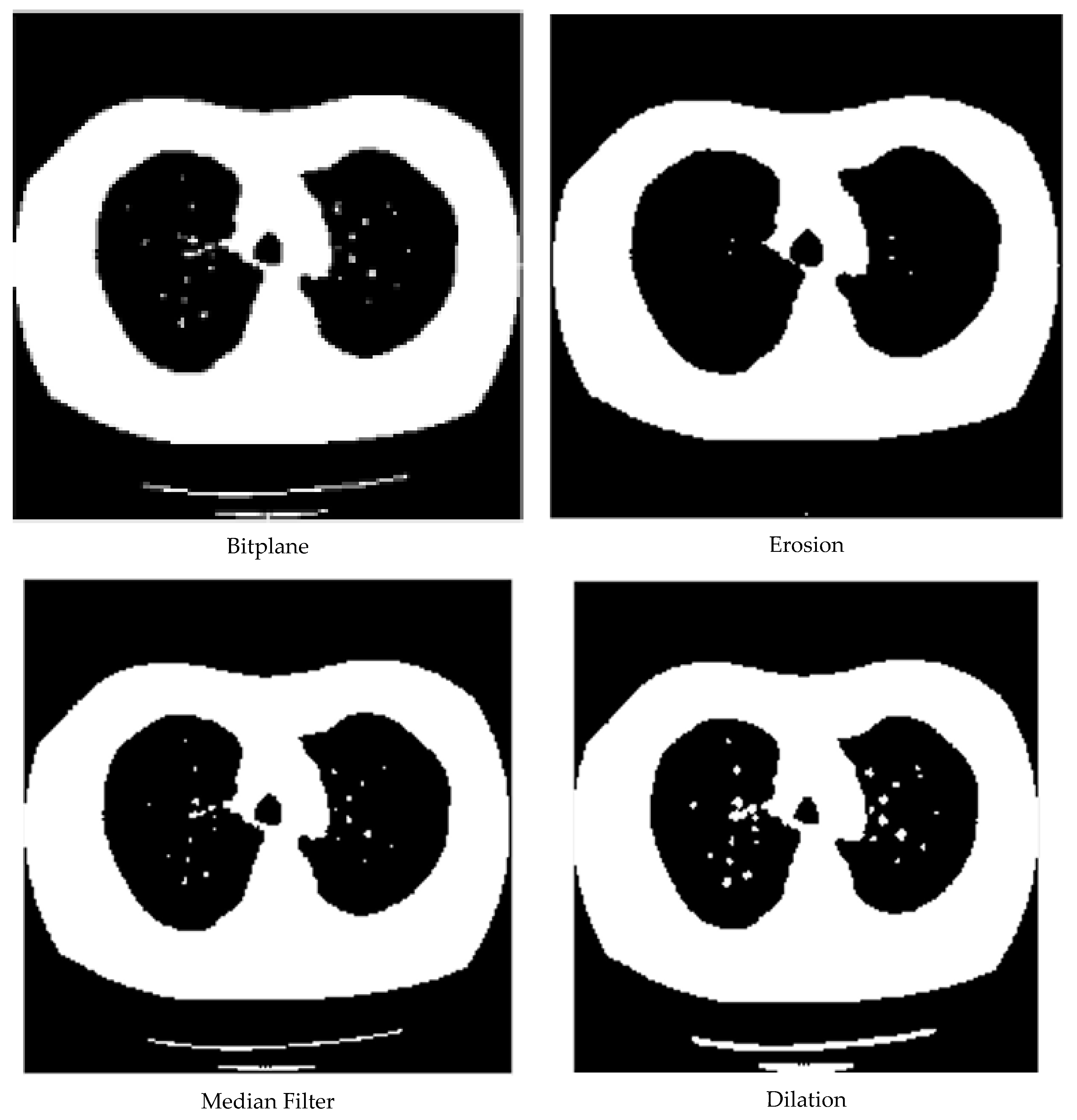
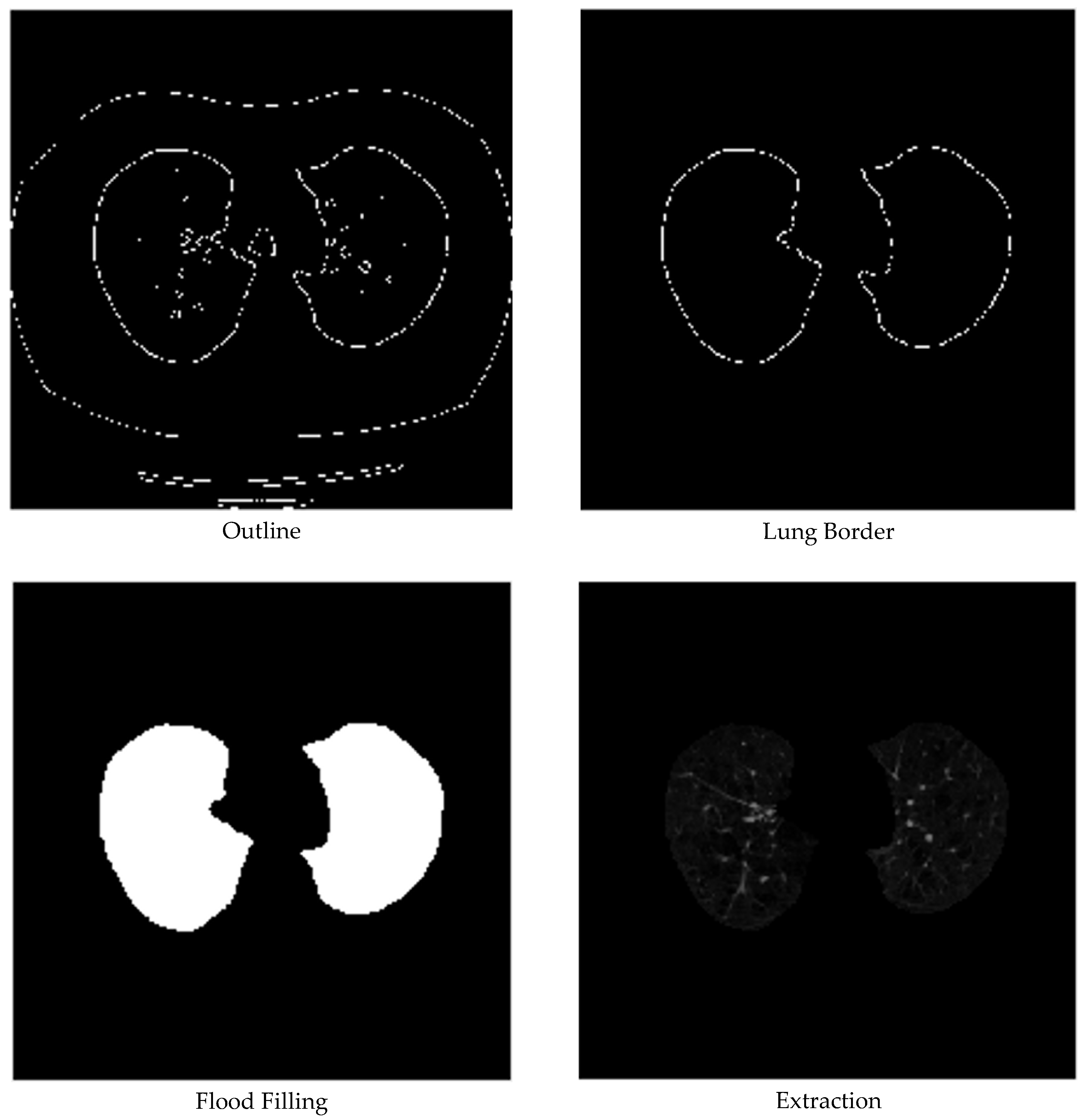

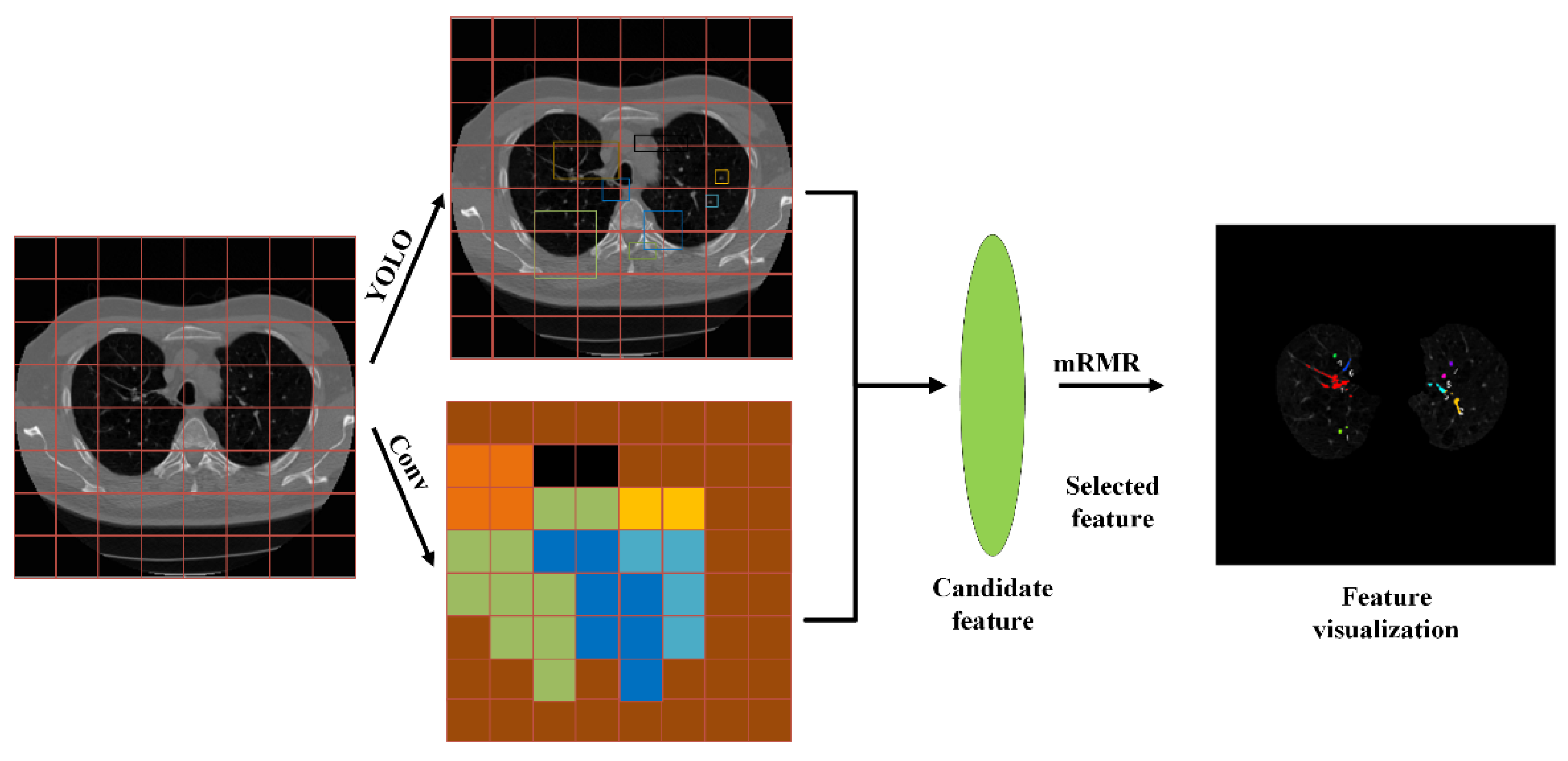
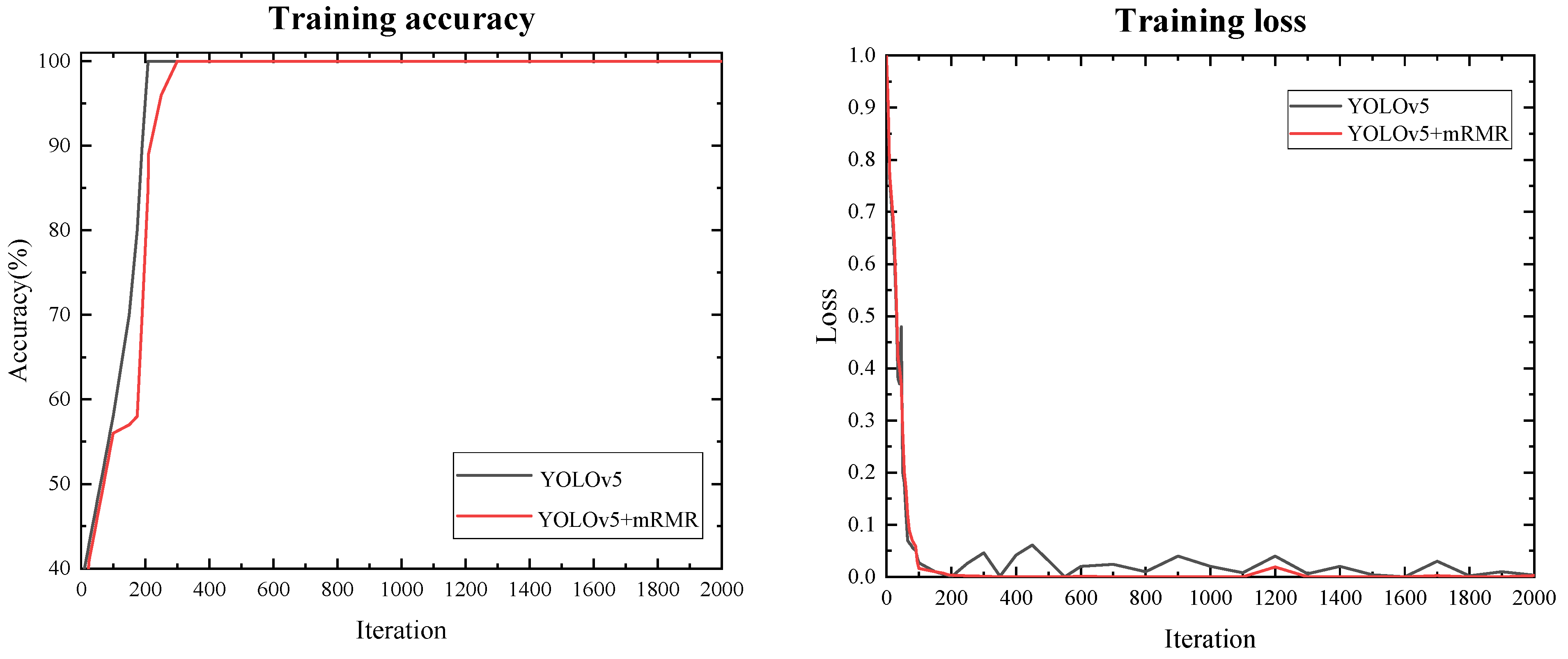
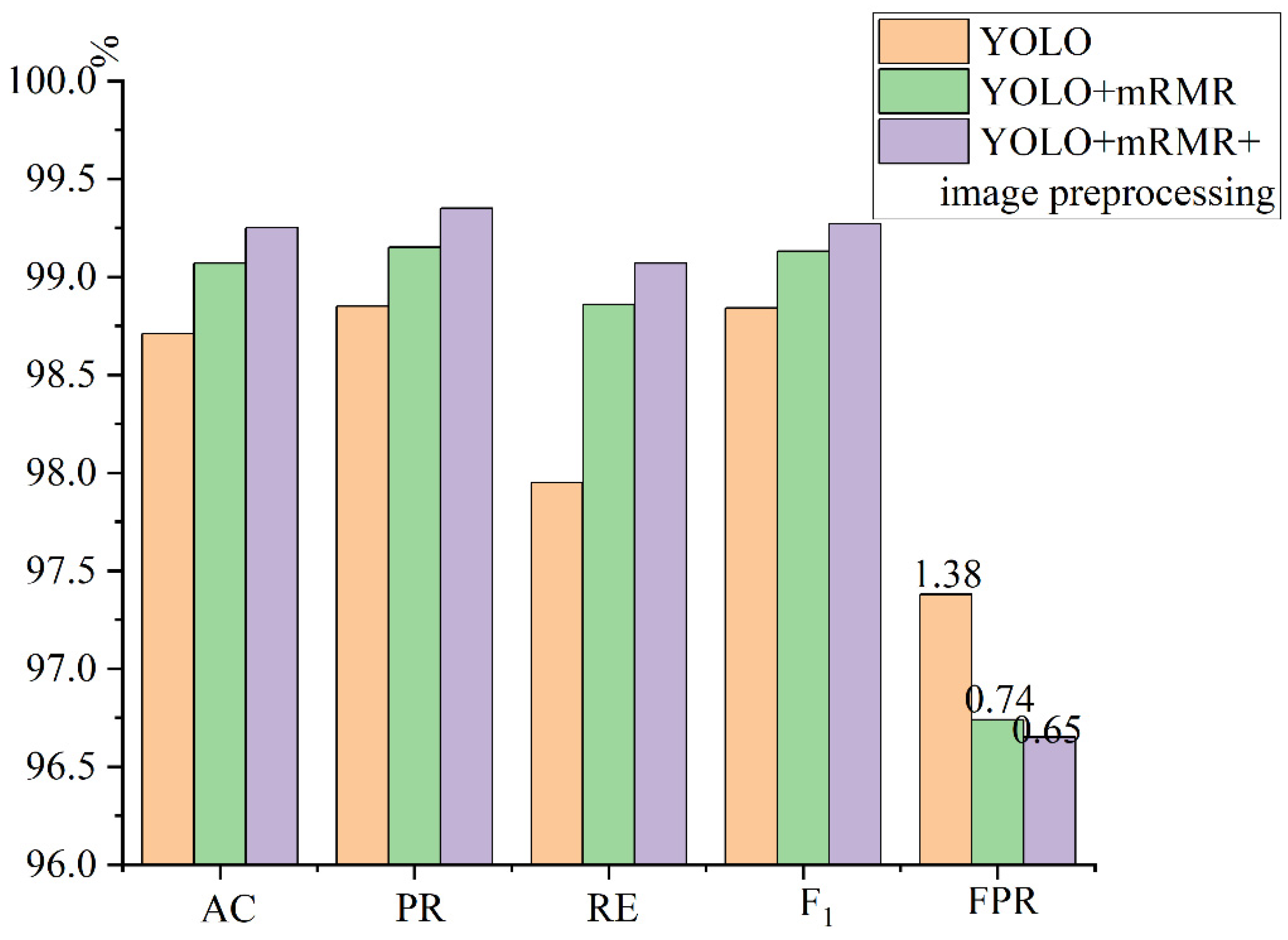

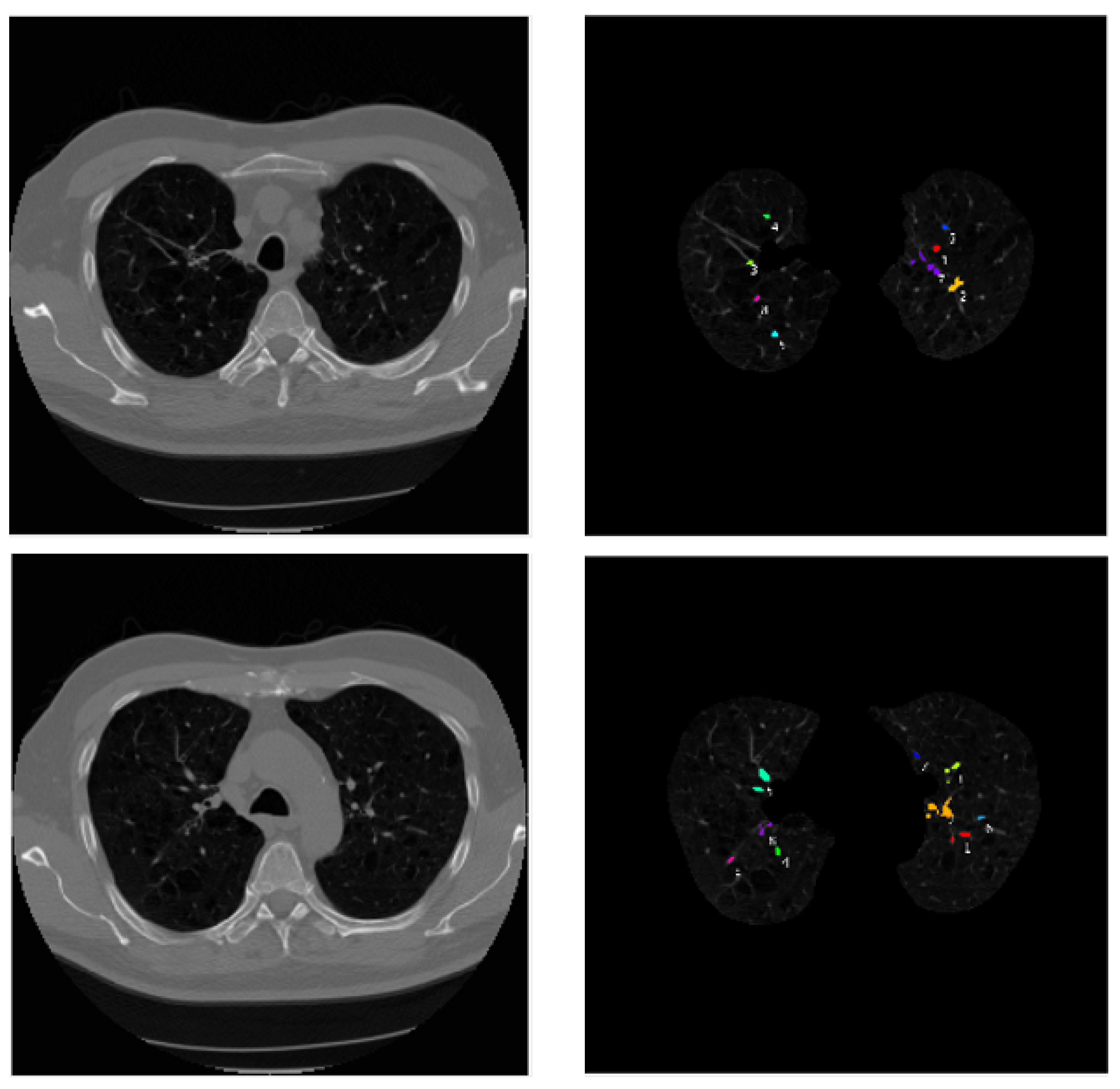
| Compile Software | Network Model | Image Size | Epochs | Mini Batch | Learning Rate |
|---|---|---|---|---|---|
| Pycharm2021 | YOLOv5 | 640 × 640 | 300 | 16 | 0.0001 |
| Model | Features | AC (%) | PR (%) | RE (%) | F1 (%) | FPR (%) |
|---|---|---|---|---|---|---|
| YOLOv5 | 1024 | 98.71 | 98.85 | 97.95 | 98.84 | 1.38 |
| YOLOv5 + mRMR | 200 | 99.07 | 99.15 | 98.86 | 99.13 | 0.74 |
| YOLOv5 + mRMR + image pre-processed | 200 | 99.25 | 99.35 | 99.07 | 99.27 | 0.65 |
Publisher’s Note: MDPI stays neutral with regard to jurisdictional claims in published maps and institutional affiliations. |
© 2022 by the authors. Licensee MDPI, Basel, Switzerland. This article is an open access article distributed under the terms and conditions of the Creative Commons Attribution (CC BY) license (https://creativecommons.org/licenses/by/4.0/).
Share and Cite
Ren, Z.; Ren, G.; Wu, D. Deep Learning Based Feature Selection Algorithm for Small Targets Based on mRMR. Micromachines 2022, 13, 1765. https://doi.org/10.3390/mi13101765
Ren Z, Ren G, Wu D. Deep Learning Based Feature Selection Algorithm for Small Targets Based on mRMR. Micromachines. 2022; 13(10):1765. https://doi.org/10.3390/mi13101765
Chicago/Turabian StyleRen, Zhigang, Guoquan Ren, and Dinhai Wu. 2022. "Deep Learning Based Feature Selection Algorithm for Small Targets Based on mRMR" Micromachines 13, no. 10: 1765. https://doi.org/10.3390/mi13101765
APA StyleRen, Z., Ren, G., & Wu, D. (2022). Deep Learning Based Feature Selection Algorithm for Small Targets Based on mRMR. Micromachines, 13(10), 1765. https://doi.org/10.3390/mi13101765





